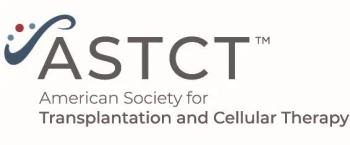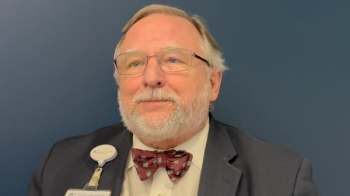
JNJ-5322 Improves Efficacy, Oral Toxicity in Multiple Myeloma
The trispecific antibody JNJ-5322 demonstrated superior efficacy vs approved agents in multiple myeloma in results shared at the EHA 2025 Congress.
At the
At the recommended phase 2 dose (RP2D), the ORR was 100%, with a complete response or better rate of 70.4% in patients who were naive to BCMA/GPRC5D-targeted therapy; the 12-month progression-free survival (PFS) rate was 95.0% in the same population.
CancerNetwork® spoke with Rakesh Popat, MBBS, PhD, MRCP, FRCPath, about what differentiates JNJ-5322 from other multiple myeloma treatments. He compared the novel agent with teclistamab-cqyv (Tecvayli) and talquetamab-tgvs (Talvey), 2 bispecific antibodies approved by the FDA. He said that JNJ-5322 had improved PFS and ORR vs teclistamab and improved oral toxicity vs talquetamab.
Popat is a consultant hematologist at University College Hospital and leads the Myeloma Clinical Trials Program and is the program lead for the National Institute for Health Research University College London Hospitals Clinical Research Facility.
Transcript:
Some of the key advantages of JNJ-5322 compared with the approved bispecific antibodies, namely teclistamab and talquetamab, are the efficacy signal and the improved toxicity profile. What we’ve demonstrated is that all patients have responded, so far, at the RP2D, and we’re also seeing improved durability of response with a 95% 12-month PFS [rate]. If you correlate that with teclistamab, the PFS was 11.3 months and the response rate was about 65%, so that’s the first thing. The second thing is that the toxicity profile is improved. Compared with talquetamab, we’re seeing significantly lower levels of oral toxicities [such as] dysgeusia—so the taste disturbance is improved—and glossitis and dysphasia are significantly improved…. That can impair the quality of life for patients receiving talquetamab, so that’s a very major, positive element. These patients are also not losing substantial amounts of weight. If you’ve got a choice, if you’ve got a patient in front of you, then the trispecific [antibody] lends itself very nicely because you’ve got a very high chance of that patient responding and having a good quality of life. It does lend itself very nicely in that setting.
Reference
Popat R, Touzeau C, Perrot A, et al. First-in-human study of JNJ-79635322 (JNJ-5322), a novel, next-generation trispecific antibody, in patients with relapsed/refractory multiple myeloma: initial phase 1 results. Abstract presented at: European Hematology Association 2025 Congress; June 12-15, 2025; Milan, Italy. Abstract S100.
Newsletter
Stay up to date on recent advances in the multidisciplinary approach to cancer.





















































































